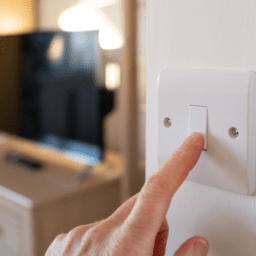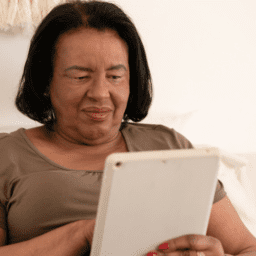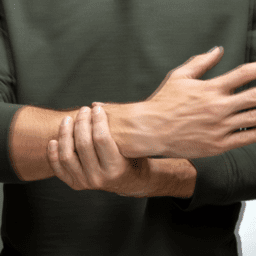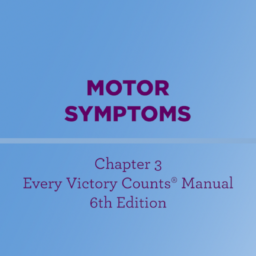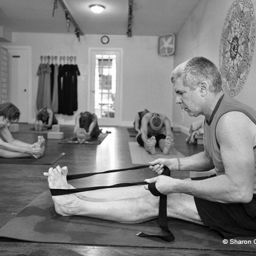Have you ever avoided a social gathering for fear that your dyskinesia will make you feel embarrassed? Or skipped an event you’d eagerly been awaiting because you unexpectedly felt OFF just before it began? If you're like many people living with Parkinson’s, the answer to at least one of these questions is yes. The good news is that there are many ways you can take control of these aspects of Parkinson’s and live your life to the fullest. This post will show you how.
Definitions: Dyskinesia and OFF
First, let’s take a look at the basics of dyskinesia and OFF.
Dyskinesia is an uncontrolled, involuntary muscle movement that is irregular in motion. In Parkinson’s, it is most often associated with long-term use of levodopa or other Parkinson’s medications that increase dopamine levels in the brain. Levodopa-induced dyskinesia causes symptoms ranging from writhing or wriggling to dramatic rocking and head bobbing, from minor tics to full-body movements. Dyskinesia can also cause swaying, which can be embarrassing on its own and even more so when you’re walking.
OFF refers to the times when your medications aren’t working optimally, and your Parkinson’s symptoms return. OFF times look different for everyone; some people’s OFF presents as slower movement, reduced mobility, increased tremor, muscle cramping, rigidity, balance issues, stiffness, shortness of breath, and/or swallowing issues. For others, OFF is when they notice an increase in non-motor symptoms, such as those relating to cognition, attention, anxiety, depression, apathy, and more.
How might dyskinesia and OFF look to others?
The reason many people experiencing dyskinesia and/or OFF may avoid public gatherings is due to the physical manifestations these symptoms can cause. Some people with dyskinesia fear others will think they’re intoxicated if they sway while they walk and, combined with other Parkinson’s symptoms such as freezing of gait, rigidity, and balance problems, walking around in public can feel too vulnerable to do. Likewise, feeling OFF can cause someone to experience gait and balance issues, as well as to experience a return of symptoms such as tremor and rigidity – all of which can make them feel embarrassed in public settings.
Why is isolation a concern?
People with Parkinson’s who feel anxious about dyskinesia or OFF times and therefore avoid public gatherings are likely to experience a lowered quality of life. Why? Because social isolation can exacerbate your Parkinson’s symptoms, put you at risk for developing other health problems, increase your chances of experiencing depression, and accelerate cognitive decline.
 Research supports the belief that avoiding isolation is essential for a person’s well-being. People who are more socially connected and less isolated have been shown to:
Research supports the belief that avoiding isolation is essential for a person’s well-being. People who are more socially connected and less isolated have been shown to:
- Have more access to information
- Have more access to transportation options
- Receive more emotional support
- Be more influenced by and likely to pursue healthy behaviors
- Have more financial resources
- Take advantage of community programs
- Experience better physical and mental health
- Manage stress, change and loss in more productive ways
- Bounce back from physical setbacks more quickly
- Be less likely to engage in risky behaviors
- Seek out opportunities to help others in ways that in return give them physical and mental health benefits as well
For these many reasons, it’s important that you don’t let worries about dyskinesia or OFF times keep you from being engaged in your community.
What steps can you take to regain control of these symptoms and stay connected?
Fortunately, there are many strategies you can take to minimize your dyskinesia and OFF times, as well as actions you can employ to stay connected even when you’re not feeling at the top of your game.
#1 - Optimize your medications
If you experience dyskinesias that are bothersome and/or present most of the time, one management strategy is to reduce your dosage of levodopa or other related Parkinson’s medications. However, if doing so would adversely affect the control of your chief Parkinson’s symptoms and/or worsen OFF symptoms, your doctor may prescribe treatment to target the dyskinesia specifically. For example, the FDA has approved an extended-release formulation of amantadine (GOCOVRI®) to treat levodopa-induced dyskinesia in people with Parkinson’s. (GOCOVRI is also indicated to treat OFF and is the only medication approved to treat both OFF and dyskinesia in people with Parkinson's.) Another option is to consider other forms of amantadine, which are approved to treat Parkinson’s and may be prescribed off-label to treat dyskinesia.
As Parkinson’s progresses, your brain produces less and less dopamine. This means it must rely much more heavily on medications to control your symptoms. Yet as Parkinson’s progresses, many people begin to experience fewer benefits from their medications, and the benefits may also be less consistent. Extended-release medications can help reduce OFF times by providing a more constant level of levodopa in the bloodstream and the brain. GOCOVRI, mentioned earlier as FDA-approved to treat Parkinson’s-related dyskinesia, also treats OFF symptoms. Medication treatment options that can minimize OFF times through extended delivery include the extended-release carbidopa/levodopa drug Rytary®, the rotigotine patch, extended-release pramipexole, and extended-release ropinerole.
 #2 - Be proactive in tracking your symptoms
#2 - Be proactive in tracking your symptoms
The more you understand about your unique OFF times and/or dyskinesia triggers, the better you can explain these to your physicians, and the better they can tailor your treatment. Many people with Parkinson’s find that exciting and emotional settings, even those that are positive and joyful, increase dyskinesia. Pay close attention to whether your dyskinesia increases when you’re feeling strong emotions, and if you notice that this is the case, build calming activities (such as meditation, yoga, tai chi, massage, and breathing exercises) into your daily routine to lessen your sympathetic nervous system’s responses to emotional situations.
#3 - Ask questions
An essential part of living well with Parkinson’s is to prepare for medical appointments and ask lots of questions during your visits. Your time with your physicians is limited, so make a plan ahead of time and compile a list of questions and goals for the appointment. Some questions you might want to ask your provider if OFF and/or dyskinesia are recurring concerns include:
-
- How long should it take my medication to start working?
- Should my medication be working the same throughout the day?
- What should I do if my medication begins to wear OFF before my next dose?
- What if I take a dose and nothing happens?
- Can I take my medication when OFF symptoms occur, even if it’s not time for my next dose?
- What options do I have for adjusting my dose of levodopa to minimize dyskinesia?
- Are there medications I could add to my regimen that can help me manage dyskinesia?
- Is there a surgical therapy appropriate for me that could help with these symptoms?
 #4 - Explore tools and techniques that can help
#4 - Explore tools and techniques that can help
In addition to helping you build skills necessary for many everyday activities at work, home, and play, occupational therapy and therapists (OT) can help you with installing and using adaptive equipment and tools that make living with Parkinson’s easier. A few of the many strategies from Parkinson’s occupational therapists for overcoming obstacles related to dyskinesia and OFF include:
- Choose clothes free of zippers, buttons, and laces, and shoes that you can slip on rather than lace-up
- Try weighted utensils and cups to make cutting, scooping, lifting food, and sipping easier
- To overcome the challenges that come with walking while dyskinetic or OFF, try walking with poles. As you walk, focus on stepping so that your heels land first. Listen to upbeat music to help you step in rhythm, and pay attention to your breathing, which reduces stress and lessens dyskinesias
#5 - Help spread the word
Despite the fact that Parkinson’s is the fastest growing neurological condition in the world and that more than 10 million people worldwide are living with it, many people still do not understand what Parkinson’s really is. Take the opportunity to be a Parkinson’s advocate. When you do, it increases awareness of Parkinson’s, builds community, and creates the opportunity for people to solve problems together. Advocating for Parkinson’s often involves educating others about what your experiences are like, including what dyskinesia and OFF mean to you. It would be exhausting to teach everyone you interact with about Parkinson’s, but finding people with whom you can share your story is a step toward creating a more inclusive and Parkinson’s-literate environment.
Take action
As you can see, there is a wide variety of strategies you can employ to manage dyskinesia and OFF so you no longer feel isolated. Give some a try today, and celebrate victories as you continue on your path of living well with Parkinson’s.
Additional Resources
The Difference Between OFF and Dyskinesia
The Science of Parkinson’s OFF
You Don’t Have to Have OFF Times with Parkinson’s
When Parkinson’s Dyskinesia Feels Embarrassing
Social Connections and Parkinson’s
You Can’t Exercise Your Way out of Poor Social Connections
Social Capital and the Value of Relationships in Parkinson’s
This post was written by the Davis Phinney Foundation.
This post was sponsored by Adamas.






